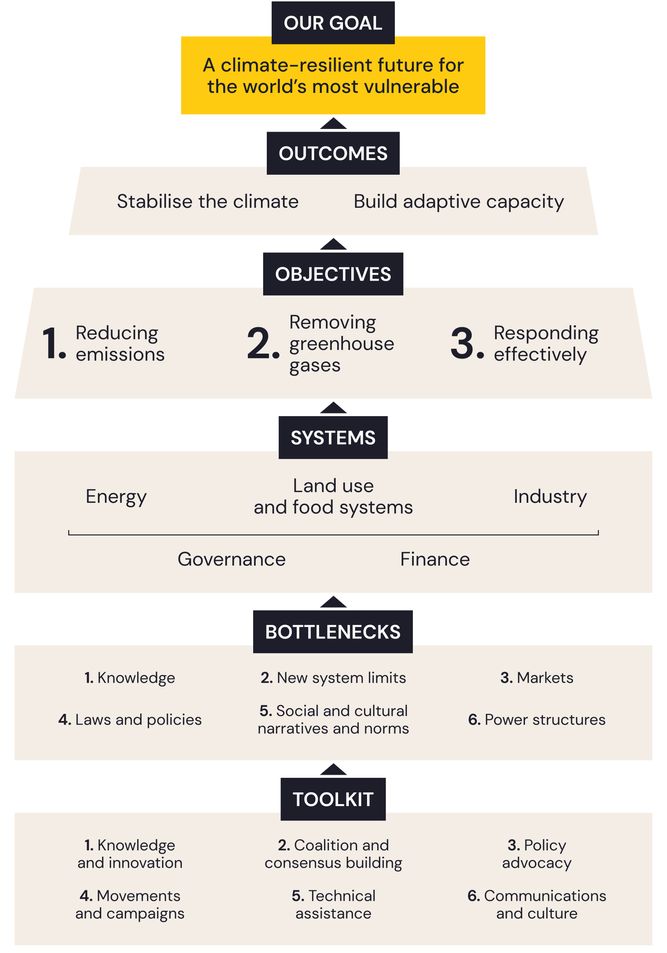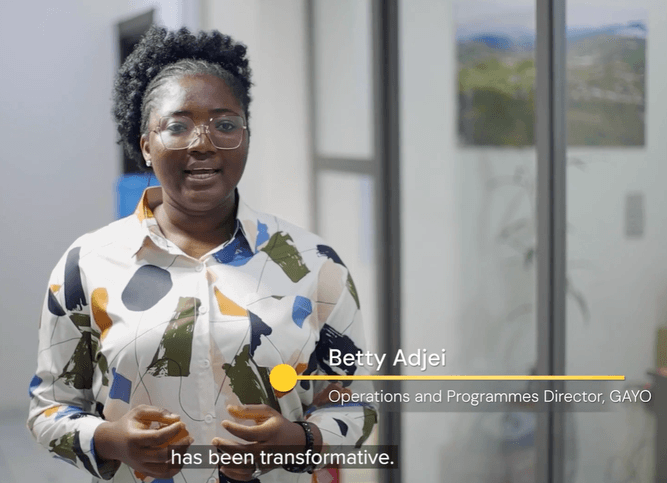
Our impact and theory of change
Impact-driven strategies for a climate-resilient future.
Our theory of change

Outcomes
To achieve this vision, we must both stabilise the climate and support the most vulnerable groups to respond to the worst impacts of climate change.
Objectives
We focus on three key pillars of work: reducing greenhouse gas emissions, removing greenhouse gases, and responding effectively to climate impacts. Each of these plays a vital role in both mitigating climate risk and building resilience among those most affected.
Systems
Achieving these objectives requires systemic change, and there are five key systems critical for addressing emissions and vulnerability: energy; land use and food systems; industry; governance and finance. Each of these systems must transition to a low-carbon and climate-resilient model.
Bottlenecks
There are significant bottlenecks to unlocking the required system changes. These include, but are not limited to: a lack of data, breaches of system limits, insufficient markets, restrictive laws and policies, and entrenched social and cultural norms. Often, multiple bottlenecks intersect, and entrenched power dynamics play a role across all of them, further obstructing progress.
Toolkit
To overcome these barriers, we invest in a comprehensive set of tools to develop ‘perfect storm’ strategies that can unlock systems change. This includes fostering knowledge and innovation, building coalitions and consensus, advocating for effective policies, supporting movements, running campaigns and communications, providing training and technical assistance, and addressing social and cultural norms.
Objectives
We focus on three key pillars of work: reducing greenhouse gas emissions, removing greenhouse gases, and responding effectively to climate impacts. Each of these plays a vital role in both mitigating climate risk and building resilience among those most affected.
Systems
Achieving these objectives requires systemic change, and there are five key systems critical for addressing emissions and vulnerability: energy; land use and food systems; industry; governance and finance. Each of these systems must transition to a low-carbon and climate-resilient model.
Bottlenecks
There are significant bottlenecks to unlocking the required system changes. These include, but are not limited to: a lack of data, breaches of system limits, insufficient markets, restrictive laws and policies, and entrenched social and cultural norms. Often, multiple bottlenecks intersect, and entrenched power dynamics play a role across all of them, further obstructing progress.
Toolkit
To overcome these barriers, we invest in a comprehensive set of tools to develop ‘perfect storm’ strategies that can unlock systems change. This includes fostering knowledge and innovation, building coalitions and consensus, advocating for effective policies, supporting movements, running campaigns and communications, providing training and technical assistance, and addressing social and cultural norms.
How we measure impact through systems change

Explore our grants driving global impact



